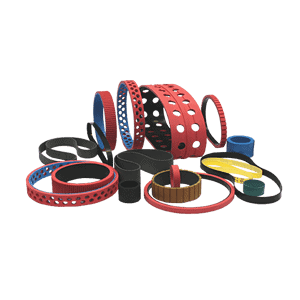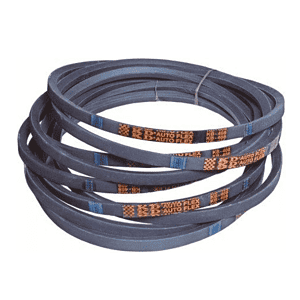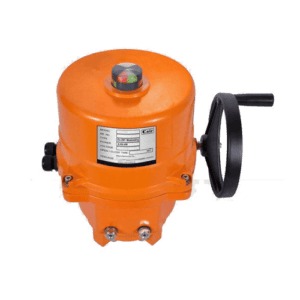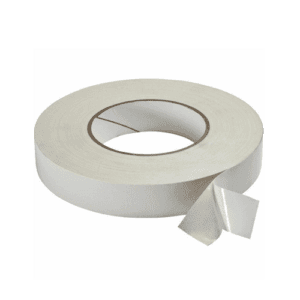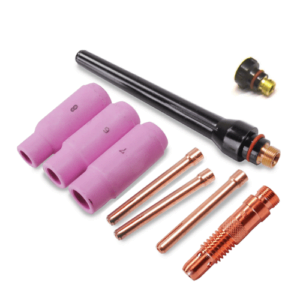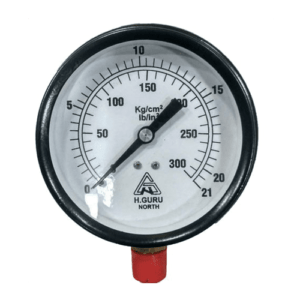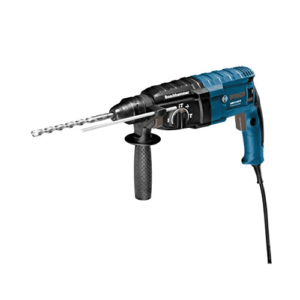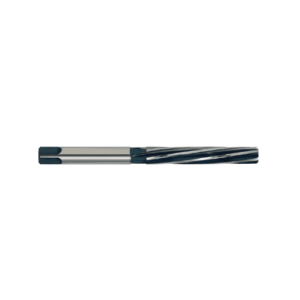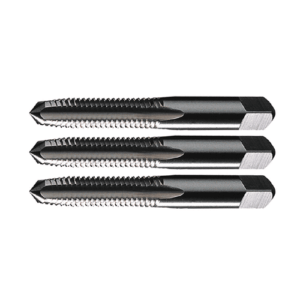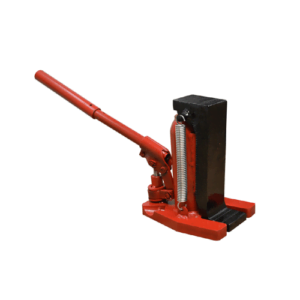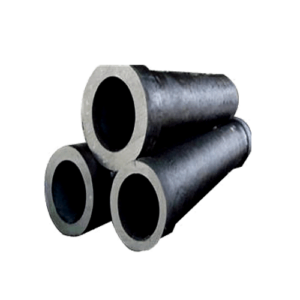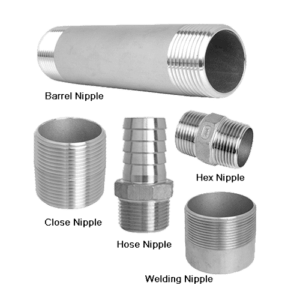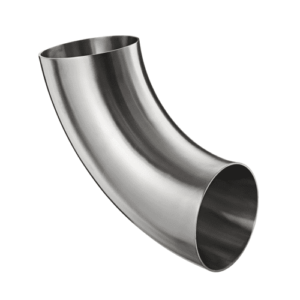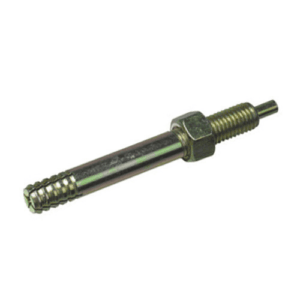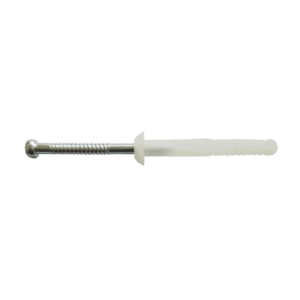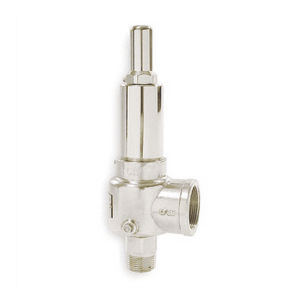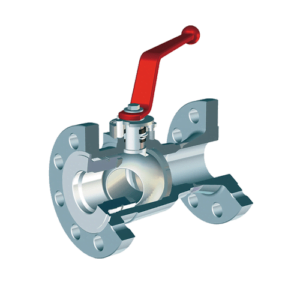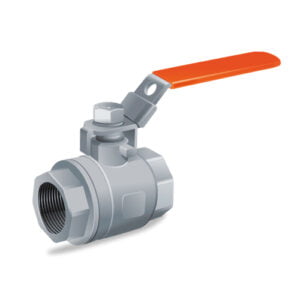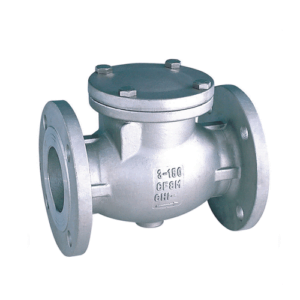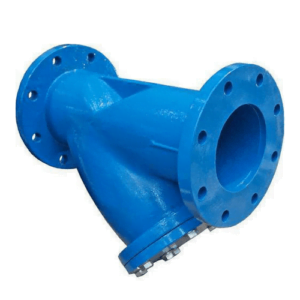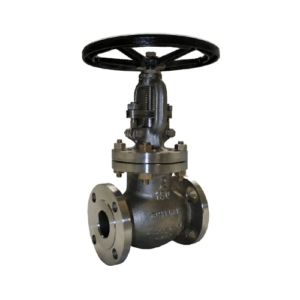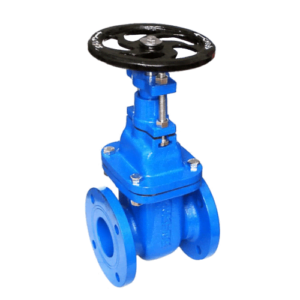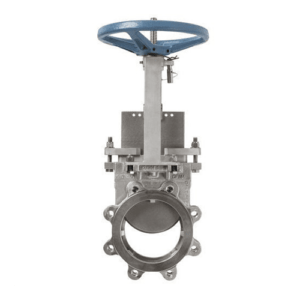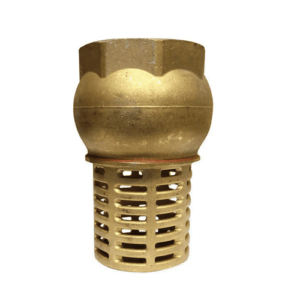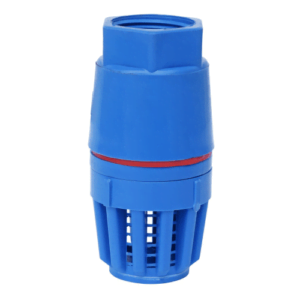Industrial Belts
Industrial Belts: Industrial belts are designed to transmit power between shafts and capable of moving at very high shaft speed. Industry has different use of industrial belts according to theirs need. These belts are round belts, v belts, flat belts, timing belt and PVC conveyor belt etc.
Electric Chain Pulley Blocks
Electric Chain Pulley Blocks: Electric chain hoist consist of an induction motor with a break to hold the load lifted on it. It’s electrical panel board and the motor with pulley coupled to the hoist, with a pendant operating station hanging with the help of a steel wire rope at a height of the operator friendly use.
Motorized Actuator
Motorized Actuator: A valve actuator is the mechanism for opening and closing a valve. Manually operated valves require someone in attendance to adjust them using a direct or geared mechanism attached to the valve stem.
Both Side Gum Patti
Both Side Gum Patti: Created by applying a thin adhesive layer to each side of a carrier substrate material, double sided tape, also known as double-coated tape or double-faced tape, is widely used by a vast array of industries for applications such as bonding, holding, mounting, splicing and packaging.
PTFE Gaskets
PTFE Gaskets: Polytetrafluoroethylene (PTFE) is a synthetic fluoropolymer of tetrafluoroethylene that has numerous applications. It is also known by the common trade name Teflon®, which is trademarked by DuPont. PTFE can be modified for use as a gasketing material with strong chemical resistance properties.
Filler Wires
Filler Wires: Welding is a fabrication or sculptural process that joins materials, usually metals or thermoplastics, by using high heat to melt the parts together and allowing them to cool causing fusion.
Welding Machines
Welding Machine: Welding is the process of joining two materials like steel, aluminum, brass, stainless steel, plastic or polymer and fusing them. Welder is the equipment used in welding. In this type of welding, a consumable electrode coated in flux is used to lay the weld. Electric current is provided by the welding power supply.
Welding Accessories
Welding Accessories: Welding gloves, aprons and helmets, dust masks, extraction systems and other safety equipment. Chipping hammers and wire brushes. Gas nozzles and contact tips for MIG/MAG welding. Tungsten rods for TIG/GTAW welding. Abrasive discs for angle grinders. Electrodes for resistance spot welding. Angle grinders. Electrode drying ovens.
Electrode
Electrode: An electrode is a solid electric conductor that carries electric current into non-metallic solids, or liquids, or gases, or plasmas, or vacuums. Electrodes are typically good electric conductors, but they need not be metals.
Pressure Gauge
Pressure Gauge: Pressure measurement is the analysis of an applied force by a fluid (liquid or gas) on a surface. Pressure is typically measured in units of force per unit of surface area. Many techniques have been developed for the measurement of pressure and vacuum. Instruments used to measure and display pressure in an integral unit are called pressure meters or pressure gauges or vacuum gauges. A manometer is a good example, as it uses the surface area and weight of a column of liquid to both measure and indicate pressure. Likewise, the widely used Bourdon gauge is a mechanical device, which both measures and indicates and is probably the best-known type of gauge.
Accessories
Power Tools: A power tool is a tool that is actuated by an additional power source and mechanism other than the solely manual labor used with hand tools. The most common types of power tools use electric motors. Internal combustion engines and compressed air are also commonly used. Other power sources include steam engines, direct burning of fuels and propellants, such as in powder-actuated tools, or even natural power sources such as wind or moving water. Tools directly driven by animal power are not generally considered power tools.
Drill Machines
Drill Machines: A drill is a tool primarily used for making round holes or driving fasteners. It is fitted with a bit, either a drill or driver, depending on application, secured by a chuck. Some powered drills also include a hammer function.
Drills vary widely in speed, power, and size. They are characteristically corded electrically driven devices, with hand operated types dramatically decreasing in popularity and cordless battery powered ones proliferating. Drills are commonly used in woodworking, metalworking, machine tool fabrication, construction and utility projects. Specially designed versions are made for medicine, space, and miniature applications.
Reamers
Reamers: A reamer is a type of rotary cutting tool used in metalworking. Precision reamers are designed to enlarge the size of a previously formed hole by a small amount but with a high degree of accuracy to leave smooth sides.
Tap Sets
Tap Sets: Tapping is when you threads are cut into a hole. A die set is used to cut threads onto a cylinder (bolt). To use a tap or a die, first determine the number of threads per inch (TPI) of the part to be fixed.
Drills
Drills: The drill’s mechanism is actually quite simple: A trigger switch activates an electric motor, which in turn drives a rotating chuck. Numerous accessories can fit into in the chuck, allowing the drill to bore holes, drive screws, and sand, polish, and grind a wide variety of materials.
Hammers
Hammers: A hammer is a tool consisting of a weighted “head” fixed to a long handle that is swung to deliver an impact to a small area of an object. This can be, for example, to drive nails into wood, to shape metal (as with a forge), or to crush rock. Hammers are used for a wide range of driving, shaping, and breaking applications.
Pliers
Pliers: Pliers are a hand tool used to hold objects firmly, possibly developed from tongs used to handle hot metal in Bronze Age Europe. They are also useful for bending and compressing a wide range of materials.
Hydraulic & Manual Jacks
Hydraulic & Manual Jacks: Working Principle of HYDRAULIC JACK or HYDRAULIC PRESS. The hydraulic jack is a device used for lifting heavy loads by the application of much smaller force. It is based on Pascal’s law, which states that intensity of pressure is transmitted equally in all directions through a mass of fluid at rest.
Tools Kits
Tools Kits: Tools and equipment are terms that are often used interchangeably without knowing the actual difference between tools and equipment, but in fact, they have different definitions. Tools and equipment are not only two words that are often used in day to day life, but also two utensils that are often used every day as well.
Tool Set has the tools you need to tackle a variety of tasks around the house. Whether you’re doing basic repairs, hanging pictures or cutting through boxes, this tool kit will equip you with the high-quality essentials required to complete many DIY projects.
Welding Neck Flange
Welding Neck Flange: A weld neck flange consists of a circular fitting with a protruding rim around the circumference. Generally machined from a forging, these flanges are typically butt welded to a pipe. The rim has a series of drilled holes that permit the flange to be affixed to another flange with bolts.
Plastic Pipe
Plastic Pipe: Plastic pipe is a tubular section, or hollow cylinder, made of plastic. It is usually, but not necessarily, of circular cross-section, used mainly to convey substances which can flow liquids and gases (fluids), slurries, powders and masses of small solids.
Cast Iron Pipe
Cast Iron Pipe: Cast iron pipe is a pipe which has had historic use as a pressure pipe for transmission of water, gas and sewage, and as a water drainage pipe during the 17th, 18th, 19th and 20th centuries.
Nipples
Nipples: A nipple is a fitting, consisting of a short piece of pipe, usually provided with a male pipe thread at each end, for connecting two other fittings. The length of the nipple is usually specified by the overall length with thread. It may have a hexagonal section in the center for a wrench to grasp (sometimes referred to as a “hex nipple”), or it may simply be made from a short piece of pipe (sometimes referred to as a “barrel nipple” or “pipe nipple”). A “close nipple” has no unthreaded area; when screwed tightly between two female fittings, very little of the nipple remains exposed.
Sockets
Sockets: A Socket Weld is a pipe attachment detail in which a pipe is inserted into a recessed area of a Valve, fitting or flange. In contrast to buttweld fittings, Socket Weld fittings are mainly used for small pipe diameters (Small Bore Piping); generally, for piping whose nominal diameter is NPS 2 or smaller.
Elbows
Elbows: An elbow is installed between two lengths of pipe (or tubing) to allow a change of direction, usually a 90° or 45° angle; 22.5° elbows are also available. The ends may be machined for butt welding, threaded (usually female), or socketed. When the ends differ in size, it is known as a reducing (or reducer) elbow.
Pin Type Anchor
Pin Type Anchor: Pin type anchor bolts find their use in soft masonry to reduce the effect of vibration and pressure. The most significant advantage of using these bolts is that it can be replaced without affecting the holding strength of the anchor system.
Frame Fixing Anchors
Frame Fixing Anchors: Plastic frame fixings are the ideal solution for the fixing of facade constructions, roof substructures, heavy wall cabinets, squared timbers, cable trays, gates and doors. With the long plug shaft, these can be directly secured in the building substrate through the attachment part.
Sleeve Anchors
Sleeve Anchors: Sleeve anchors are the most versatile masonry expansion anchors because they can be used in a variety of base materials, including concrete, brick, and block. They are available in a wide variety of diameters, lengths, and head styles. The available head styles are acorn, hex nut, flat, countersunk, and round head.
Bullet Anchors
Bullet Anchors: Bullet type anchor shell with internal thread for pre-positioned installation. When the bullet is placed in shell & hit with a setting tools it slides forward & the inside part of shell expands and takes the grip in the wall.
Threaded Rod & Studs
Threaded Rod & Studs: The threaded rod Fairfield is basically used to fasten wood or metal together. It acts as a pin that is used to connect two materials together. They are also used to stabilize structures by inserting them into concrete or wood during repair.
Studs & Nuts
Studs & Nuts: A bolt with threads on both ends designed to be screwed permanently into a fixed part at one end and to receive a nut on the other. A bolt is a threaded fastener mated with a nut. A screw has either pre-formed or self-made external threads. A stud is an externally threaded headless fastener. One end mate with a tapped component and the other with a standard nut.
Nylon Anchor
Nylon Anchor: Nylon Anchors are pre-assembled through fixing, a light duty nail expanding for solid masonry and hollow wall constructions. The design of the expansion nail used in the Nylon Anchor is such that it can be removed if need be.
Sanitary Fixing Anchor
Sanitary Fixing Anchor: Nylon Anchors are pre-assembled through fixing, a light duty nail expanding for solid masonry and hollow wall constructions. The design of the expansion nail used in the Nylon Anchor is such that it can be removed if need be.
Safety Valve
Valve: Valves are for starting or stopping flow, regulating or throttling flow, preventing back flow or relieving and regulating pressure in fluid or gaseous handling applications. Common valve types include: Ball, Butterfly, Check, Diaphragm, Gate, Globe, Knife Gate, Parallel Slide, Pinch, Piston, Plug, Sluice, etc.
Safety Valve: A safety valve is a valve that acts as a fail-safe. An example of safety valve is a pressure relief valve, which automatically releases a substance from a boiler, pressure vessel, or other system, when the pressure or temperature exceeds preset limits.
Ball Valve
A ball valve is a form of quarter-turn valve which uses a hollow, perforated, and pivoting ball to control flow through it. It is open when the ball’s hole is in line with the flow and closed when it is pivoted 90-degrees by the valve handle. Ball valves are durable, performing well after many cycles, and reliable, closing securely even after long periods of disuse. They are commonly used in applications ranging from residential to industrial for their robustness, ease of operation, and versatility in handling various fluids, gases, and slurries.
Non Return Valve
A non-return valve, also known as a check valve, is designed to allow fluid to flow through it in only one direction. This type of valve is crucial for preventing the backflow of fluid, which could potentially cause damage or disrupt operation in systems like pumping stations, hydraulic systems, and water supply networks. Non-return valves automatically open under forward flow and close when the flow ceases or reverses, operating entirely by the pressure of the fluid being handled without the need for manual intervention. Their simple design and effective functionality make them indispensable in maintaining the integrity and efficiency of fluid control systems.
Strainer Valve
Valve: Valves are for starting or stopping flow, regulating or throttling flow, preventing back flow or relieving and regulating pressure in fluid or gaseous handling applications. Common valve types include: Ball, Butterfly, Check, Diaphragm, Gate, Globe, Knife Gate, Parallel Slide, Pinch, Piston, Plug, Sluice, etc.
Strainer: Y-Strainers are devices for mechanically removing unwanted solids from liquid, gas or steam lines by means of a perforated or wire mesh straining element. They are used in pipelines to protect pumps, meters, control valves, steam traps, regulators and other process equipment.
Gate Valve
Valve: Valves are for starting or stopping flow, regulating or throttling flow, preventing back flow or relieving and regulating pressure in fluid or gaseous handling applications. Common valve types include: Ball, Butterfly, Check, Diaphragm, Gate, Globe, Knife Gate, Parallel Slide, Pinch, Piston, Plug, Sluice, etc.
Gate Valve: A gate valve, also known as a sluice valve, is a valve that opens by lifting a barrier out of the path of the fluid. Gate valves require very little space along the pipe axis and hardly restrict the flow of fluid when the gate is fully opened. The gate faces can be parallel but are most commonly wedge-shaped.
Sluice Valve
Valve: Valves are for starting or stopping flow, regulating or throttling flow, preventing back flow or relieving and regulating pressure in fluid or gaseous handling applications. Common valve types include: Ball, Butterfly, Check, Diaphragm, Gate, Globe, Knife Gate, Parallel Slide, Pinch, Piston, Plug, Sluice, etc.
Sluice Valve: A gate valve, also known as a sluice valve, is a valve that opens by lifting a barrier out of the path of the fluid. Gate valves require very little space along the pipe axis and hardly restrict the flow of fluid when the gate is fully opened. The gate faces can be parallel but are most commonly wedge-shaped.
Knife Edge Valve
A knife edge valve, more commonly known as a knife gate valve, is designed for on-off and throttling services, handling slurries, viscous, corrosive, and abrasive media. This type of valve features a sharp blade, which helps it cut through thick liquids and sludge with ease, making it highly effective in industries such as wastewater treatment, mining, and paper manufacturing. The knife gate valve’s design allows it to provide a tight seal even when dealing with fluids that contain solids, thereby preventing leaks and ensuring efficient flow control. Its ability to handle high-density fluids and its robust construction make it a preferred choice for challenging industrial applications.
Foot Valve
Valve: Valves are for starting or stopping flow, regulating or throttling flow, preventing back flow or relieving and regulating pressure in fluid or gaseous handling applications. Common valve types include: Ball, Butterfly, Check, Diaphragm, Gate, Globe, Knife Gate, Parallel Slide, Pinch, Piston, Plug, Sluice, etc.
Foot Valve: A foot valve is a type of check valve that is typically installed at a pump or at the bottom of a pipe line (hence the name). Foot valves act like ball check valves, but have an open end with a shield or screen over it to block debris from entering the line.
Plug Valve
Plug Valve: Plug valves are valves with cylindrical or conically tapered “plugs” which can be rotated inside the valve body to control flow through the valve. The plugs in plug valves have one or more hollow passageways going sideways through the plug, so that fluid can flow through the plug when the valve is open.
Fire Hydrant Landing Valve
A Fire Hydrant Landing Valve, also known as a landing valve, is a crucial component in firefighting water supply systems. It provides an accessible means for the fire service to tap into the municipal water supply during emergencies. These valves are typically mounted on risers within buildings or on external fire hydrants, featuring a connection point for fire hoses. They are designed to withstand high pressures and allow for rapid deployment and control of water flow to combat fires effectively, ensuring quick and efficient response in critical situations.
Needle Valve
Needle Valve: A needle valve is a type of valve with a small port and a threaded, needle-shaped plunger. It allows precise regulation of flow, although it is generally only capable of relatively low flow rates.
Gas Valve
A gas valve is a critical component in managing the flow and pressure of gas in heating systems, appliances, and industrial processes. This type of valve is specifically designed to ensure safe and efficient operation when handling combustible gases such as natural gas or propane. Gas valves are equipped with safety mechanisms that shut off the gas flow automatically if the pilot light goes out or if a leak is detected, preventing potential hazards. They are commonly found in residential furnaces, gas-powered water heaters, and commercial gas stoves, playing a pivotal role in both safety and functionality.
Gauge Cock
A gauge cock is a type of valve used primarily in conjunction with water level gauges to control the flow of fluids into the gauge. This valve allows operators to isolate the gauge from the vessel or pipeline system for maintenance or replacement without disrupting system operations. Gauge cocks are crucial in applications like boiler operations, where precise water level monitoring is essential for safety and efficiency. They typically feature a simple quarter-turn operation and provide a reliable means of sealing off the gauge from high pressures and temperatures.
Relief Valve
Relief Valve: A relief valve or pressure relief valve is a type of safety valve used to control or limit the pressure in a system; pressure might otherwise build up and create a process upset, instrument or equipment failure, or fire.

